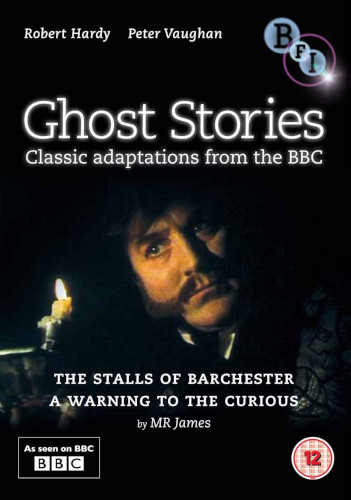The Stalls of Barchester (A Ghost Story for Christmas)

The Stalls of Barchester is a short film produced in the 1970s by the BBC as part of its yearly anthology series, A Ghost Story for Christmas. It’s based on the story “The Stalls of Barchester Cathedral,” written in the early 1900s by M. R. James.
The Stalls of Barchester has the distinction of being the first episode of BBC’s A Ghost Story for Christmas series. It first aired on Christmas Eve in 1971. Five more episodes followed, always being released over the Christmas period.
Robert Hardy, of All Creatures Great and Small fame, plays Archdeacon Haynes, an ambitious clergyman who feels he is being held back by his superior’s unwillingness to retire. At 92 years old he is fit as a fiddle and still going strong.
However, Haynes finally gets his chance to move up the ranks when Archdeacon Pulteney tumbles down the stairs and breaks his neck because of a missing stair rod.
Much of the film is told in flashbacks via a wraparound story. Dr. Black (Clive Swift) is a scholar cataloguing Barchester Cathedral’s library in 1932. When a colleague shows him a locked box and offers him the opportunity to catalogue its contents, Dr Black is intrigued. The box was the property of Archdeacon Haynes, who died in mysterious circumstances 50 years ago.
Among other things, the box contains the Archdeacon’s diary, in which he logged many of his personal worries as a form of therapy.
The film flashes back and forth between Scenes of Black studying the diary and scenes of Archdeacon Haynes going about his everyday business.
Although Black never suggests Haynes was behind the accident that killed Archdeacon Putney and Haynes never admits it in his scribblings, it’s obvious that he let his impatience get the better of him and was a greater sinner than a man of god.
In the years following the stair rod incident, Haynes shares his growing inner fears with his diary, which shows he was a haunted man who was prepared to work very long hours rather than spend time alone at his home, where he often heard ghostly voices and conversations and kept encountering a large black cat, even though his manservant tells him there is no cat in the house.
His situation takes a turn for the worse one day during an evening service, late in the year, when he rests his hands on a carving on the cathedral choir stalls and finds his hand suddenly resting not on carved wood but on fur, causing him to cry out, disrupting the choir song.
Haynes subsequently learns the carvings were produced from the wood of a tree where local people used to be hanged. They were carved by a psychic named Austin the Twice-Born who put a curse on them that would only come into force if they were touched by someone with blood on their hands.
The Stalls of Barchester is a traditional ghost story that works well as a short film, though some viewers may find it a little slow-moving. Nevertheless, it has a few chilling scenes and was never intended to be anything other than a dramatization of a traditional Victorian ghost story.
However, although the fact that several more ghost stories followed shows the Stalls of Barchester was well received by British viewers, this is not one of my favourite episodes from the BBC’s ghost story series. In my opinion, several of the later episodes are superior options, with The Signalman being my top choice overall.
Even though there were only six episodes in the original A Ghost Story for Christmas TV series, and all of them initially aired in the 1970s, DVD and Blu-ray collections often contain more because, from 2005 onward, the BBC resurrected the idea and has aired new offering for most of the proceeding years. The collections generally contain Whistle and I’ll Come to You as well. This dramatization pre-dates the series. It first aired in 1968 as part of the BBC’s Omnibus series but could be seen to have pathed the way for the series that was to come. To add to the confusion, there is also a Whistle and I’ll Come to You remake, made in 2010.
~~~
